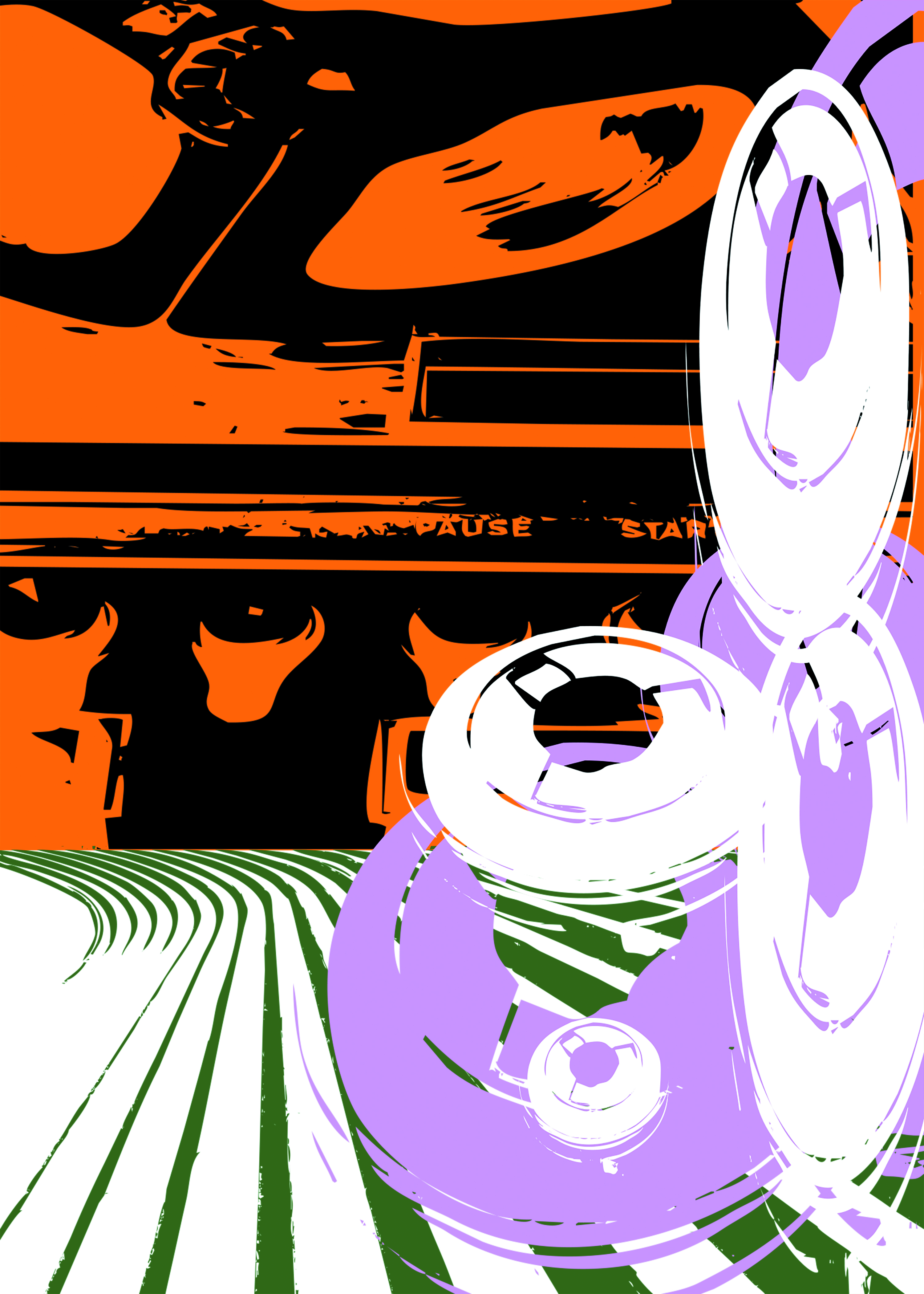When I tested the ADAM Audio A7V nearfield monitors [Tape Op #153], I also acoustically measured my control room for the first time. It brimmed with problem areas. Though I will defend home recording with my last breath, I am well aware that – at least from an acoustic perspective – bedrooms do not make stellar control rooms. Some problems are easier to fix than others: Mount a few DIY sound panels at key locations and flutter echo withdraws. Place your monitors on stands and further clarity emerges. However, bass frequencies below 80 Hz are a harder nut to crack, as they accumulate in corners and most nearfield monitors appropriate for small rooms are not equipped to reproduce low frequencies with any strength.
At the suggestion of ADAM Audio, I added the Sub10 MK2 to my monitoring chain and haven’t looked back. I already loved the sound of the A7Vs, which improved my home studio significantly. Now they sound even better.
The Sub10 MK2 is substantial, but it fits under my desk – phew! Inputs are balanced (XLR) or unbalanced (RCA) and the same goes for outputs. In my case, I ran balanced cables out of my monitor controller into the Sub10 MK2 and another pair from the Sub10 MK2’s "Satellite Out" to my A7Vs. The back panel hosts handy controls for phase, volume, and crossover frequency, as well as an additional output for a second subwoofer if you really want to party. The Sub10 MK2 enters power saving mode when it’s not getting signal, but gently awakens when needed; a thoughtful, energy-saving feature (that can be disabled if desired). After recovering my strength from dragging the Sub10 MK2 into my control room (it’s almost 50 lbs.), I played with the placement and settings for phase, volume, and crossover, settling on 80 Hz. After that initial set up period, I haven’t had to mess with it once, which is high praise. I sometimes forget that it’s even there, though I’m grateful for it every time I EQ a kick drum or bass guitar. On kicks in particular, I admit to making an informed guess in previous mixes. Now that I can hear all the frequencies clearly, it’s much easier to sculpt a sound that contributes to the song – no need to cross my fingers and hope for the best. For the first time, I can accurately determine exactly where to boost and where to place the neighboring high-pass filter. The same goes for bass guitar – the full range of the instrument is much clearer to me now, helping me select appropriate compression and EQ settings. Without a sub, I’d have to consult a dynamic EQ and determine settings based primarily on visual cues. It’s certainly always better to use your ears, and now I have that luxury. I’m looking forward to overdubbing bass on future records, and hearing and feeling the impact that low frequencies add to songs. I’ve also taken to double-checking vocal, guitar, and percussion tracks to ensure that I remembered to filter out low-end rumble. The poor mastering engineer tasked with wrestling my recent mixes into submission had no complaints – a far cry from the first record I ever mixed, when the mastering engineer – Jeff White of Philadelphia’s Port Richmond Guitar Spa – called me to ask if I meant to have so much low end in my mixes. Nope (though to his credit, we became friends anyway).
Before auditioning the Sub10 MK2, I didn’t think I needed a subwoofer at all. I mostly mix indie rock records and educational videos, neither of which highlight low frequency content. Once I experienced the new-found ease of mixing kick and bass, however, I was confronted with my error. Given its ability to help generate a more accurate mix, I regret not acquiring a subwoofer earlier. Nonetheless, I think accuracy doesn’t entirely capture the benefit of the Sub10 MK2. I recently remixed a Fine Motor album that we recorded during the pandemic, and I admit that spending so much time on what felt like endless mix revisions sapped some of the joy out of the experience. When I added the Sub10 MK2 to my setup, I felt the music on an emotional level again. The album sprang to life, and I worked quickly, regaining lost momentum. It brought me back to the initial excitement of writing the songs and the productive, creative mindset of the tracking sessions.
I’m always looking for gear that sounds good, makes my life easier, and helps my mixes translate better. The Sub10 MK2 checks all those boxes for me. I recommend it to anyone else who wants to know what’s going on in those elusive low frequencies, especially if you currently employ nearfield monitors. And if it brings some unanticipated joy, too, that’s not such a bad thing.




_disp_horizontal_bw.jpg)